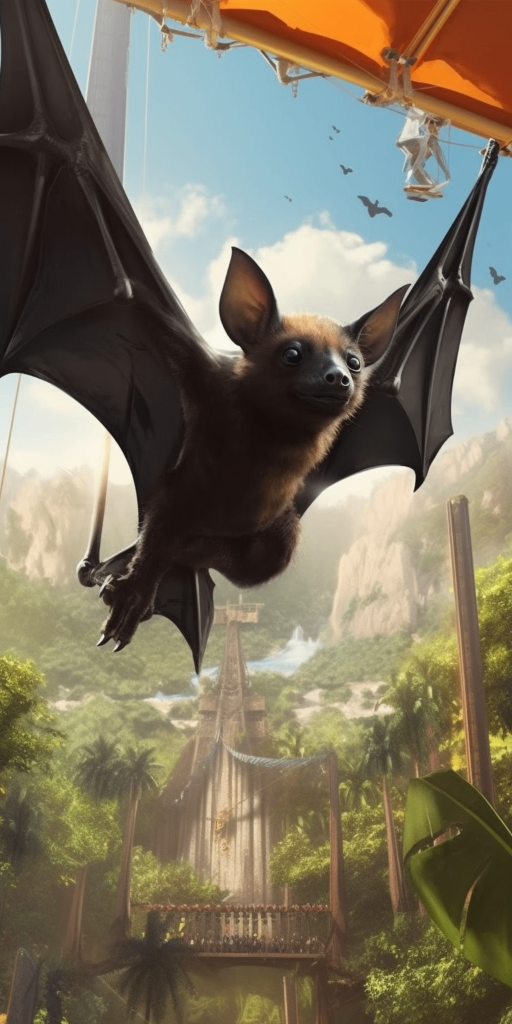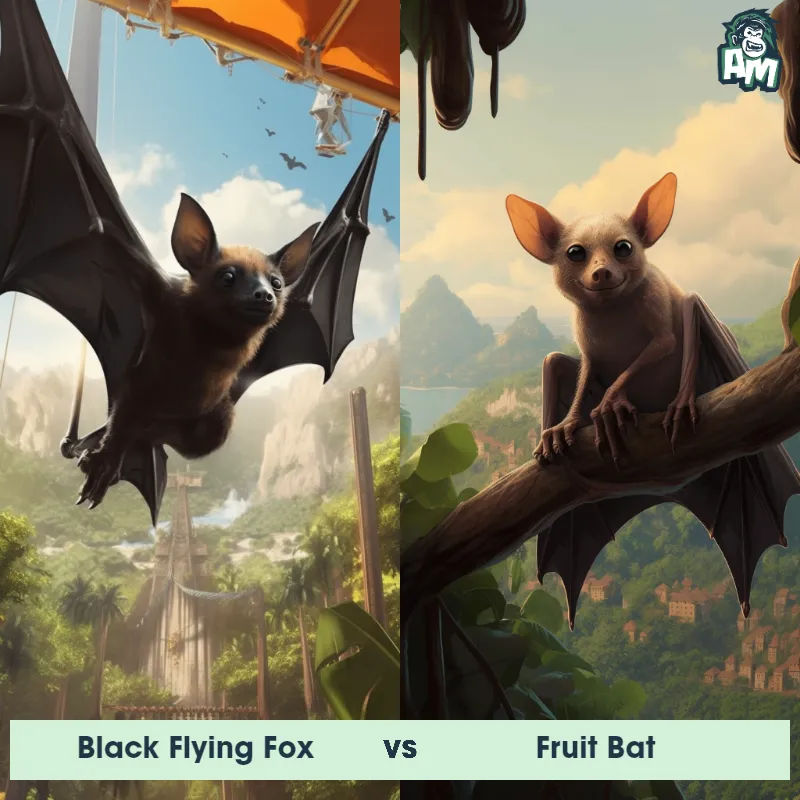The Black Flying Fox
The Black Flying Fox, also known as the Pteropus alecto, is a large bat species found in Australia. These bats have a wingspan of up to 1.5 meters, making them one of the largest bat species. They have a distinct black fur coat, hence their common name, and their noses are large and fox-like. Being fruit-eaters, they possess sharp teeth that allow them to pierce fruit skins easily. Black Flying Foxes are nocturnal creatures, spending their days roosting in large colonies on tall trees, and becoming active at dusk to fly out in search of food.

| Black Flying Fox | |
|---|---|
| Size | Wingspan up to 1.5 meters (4.9 feet) (metric: 1.5 meters) |
| Weight | Up to 1.5 kilograms (3.3 pounds) (metric: 1.5 kilograms) |
| Speed | Speed: 6 mph (9.7 km/hr) |
| Key Strength | Unknown |
| Biggest Weakness | Unknown |
| Scientific Name | Pteropus alecto |
| Family | Pteropodidae |
| Habitat | Forests, mangroves, and urban areas |
| Geography | Southeast Asia and Australia |
| Diet | Fruit, nectar, and pollen |
| Lifespan | 15 years - 30 years |

The Black Flying Fox
The Black Flying Fox, also known as the Pteropus alecto, is a large bat species found in Australia. These bats have a wingspan of up to 1.5 meters, making them one of the largest bat species. They have a distinct black fur coat, hence their common name, and their noses are large and fox-like. Being fruit-eaters, they possess sharp teeth that allow them to pierce fruit skins easily. Black Flying Foxes are nocturnal creatures, spending their days roosting in large colonies on tall trees, and becoming active at dusk to fly out in search of food.
Fun Fact: The Black Flying Fox can travel long distances in search of food, and can fly up to 50 kilometers in a single night!
| Black Flying Fox | |
|---|---|
| Size | Wingspan up to 1.5 meters (4.9 feet) (metric: 1.5 meters) |
| Weight | Up to 1.5 kilograms (3.3 pounds) (metric: 1.5 kilograms) |
| Speed | Speed: 6 mph (9.7 km/hr) |
| Key Strength | Unknown |
| Biggest Weakness | Unknown |
| Scientific Name | Pteropus alecto |
| Family | Pteropodidae |
| Habitat | Forests, mangroves, and urban areas |
| Geography | Southeast Asia and Australia |
| Diet | Fruit, nectar, and pollen |
| Lifespan | 15 years - 30 years |
Black Flying Fox Matchups
We use AI to simulate matchups between the Black Flying Fox and other animals. Our simulation considers size, strength, and natural predatory behaviors to determine the most likely outcome.
Black Flying Fox: Diet, Predators, Aggression, and Defensive Behaviors
What do Black Flying Foxes eat?
Black Flying Foxes primarily feed on fruit, nectar, and flowers. They have a diet that is predominantly made up of various fruits such as figs, bananas, and mangoes. They play a crucial role in pollination as they consume nectar from flowers while foraging for food.
Do Black Flying Foxes have any predators?
Black Flying Foxes have a few natural predators in the wild, including birds of prey such as eagles and owls. Additionally, snakes and monitor lizards are known to prey on young or injured Black Flying Foxes. However, human activities such as habitat destruction and hunting pose the most significant threat to their population.
Are Black Flying Foxes aggressive?
Black Flying Foxes are not typically aggressive towards humans or other animals unless they feel threatened or provoked. They are social animals that prefer to spend their time roosting in large groups in trees during the day and foraging for food at night.
Do Black Flying Foxes engage in fights?
Black Flying Foxes do not engage in physical fights with each other unless there is a territory dispute or competition for food sources. They are known to communicate through vocalizations and scent marking to establish dominance within their social groups.
How do Black Flying Foxes defend themselves?
Black Flying Foxes have several defense mechanisms to protect themselves from predators. They have sharp claws that they can use for self-defense, along with their ability to fly swiftly and evade threats. They also have a keen sense of hearing and smell to detect potential dangers in their environment.
What is the biggest weakness of Black Flying Foxes in a fight?
The biggest weakness of Black Flying Foxes in a fight is their vulnerability while roosting in large colonies. Predators such as birds of prey can target individual bats within the group, making it challenging for them to defend against aerial attacks. Additionally, their reliance on communal roosting exposes them to potential threats when they are most vulnerable.
Fun Fact: Black Flying Foxes play a crucial role in pollination, as they feed on nectar and pollen from various flowering plants, aiding in the plant's reproduction.
Fun Fact: Despite their large size, Black Flying Foxes are excellent flyers, capable of reaching speeds up to 60 kilometers per hour.














